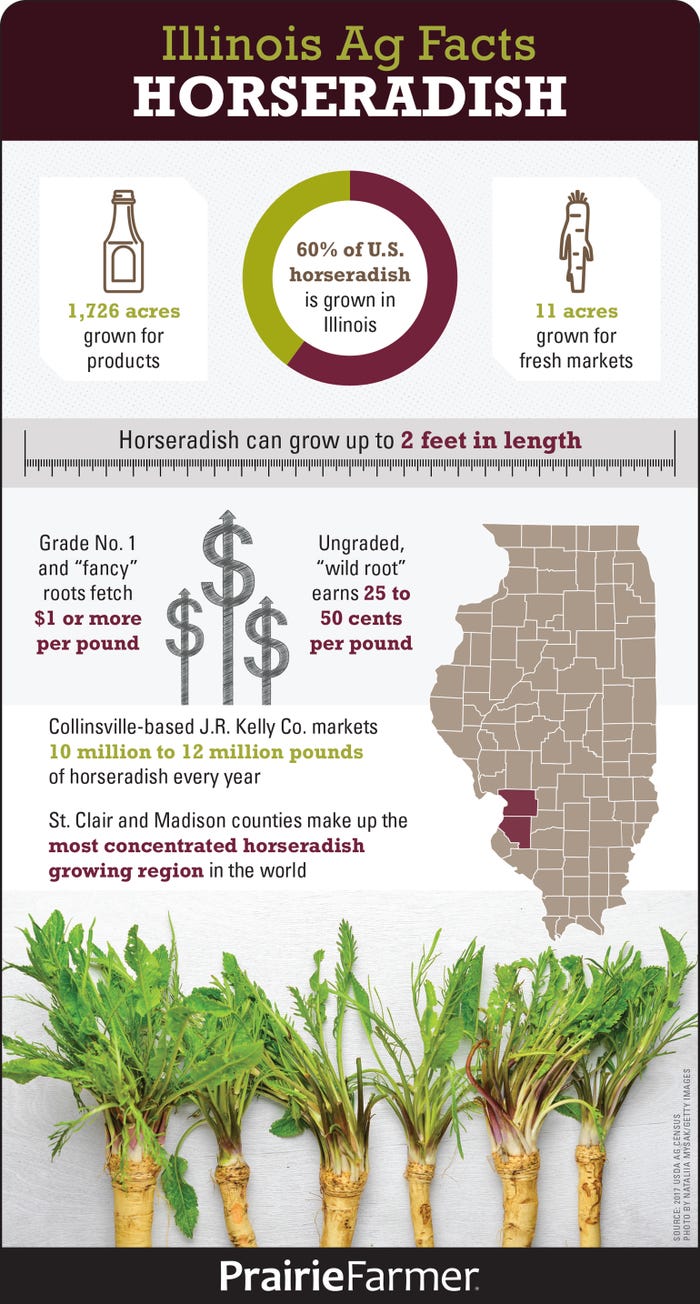
Alan Walters probably wouldn’t admit to saving the Illinois horseradish industry. But at the very least, he made it brighter.
Just 10 years ago, horseradish farmers were dealing with a disease complex that darkens the white interior of the tangy root consumers love. At that point, farmers ranked it as their top horseradish-growing concern.
Related: Horseradish farmers regroup as restaurant demand sinks
Enter Walters, a plant breeder at Southern Illinois University who breeds new lines of horseradish for Illinois farmers. He’s focused on producing crosses that are tolerant to root discoloration. He then gives the new clones to Illinois horseradish farmers, who plant them, save the side roots, and plant them again at a much larger scale.
Combined with crop rotation, Walters reports the modern clones have a strong tolerance to root discoloration. “Many farmers are saying it’s not really a problem for them anymore,” he adds.
Jeff Heepke, a Collinsville, Ill., horseradish farmer and president of the Illinois Horseradish Growers Association, says most farmers who sell to the condiment and ingredient industries grow three to five different varieties, picking them not only for root discoloration tolerance, but for biomass yield as well. Growers who sell higher-quality roots for fresh markets are also concerned about texture of the root skin.

Walters explains, “Those roots that get really, really big tend to be barkier on the skin surface. The ones that have a little less biomass and a little more quality tend to have smoother roots.”
He cites an old variety known for high biomass, big top western horseradish. It doesn’t have high tolerance to root discoloration, but it’s still grown by some farmers.
Heepke points out the need for new and improved varieties. “As the varieties grow older, we need something new to come in and replace it,” he says.
He adds that it takes a few years to get enough horseradish roots to produce at a commercial level. He will sometimes scrap a variety if it’s not performing well, drawing on other varieties from Walters to fill the 200 acres he and his family put into horseradish every year.
“That constant flow of new varieties helps us achieve consistently good yields,” Heepke concludes.
About the Author(s)
You May Also Like




